Classic Mongolia Adventure
Mongolia's great National Parks, sacred mountains, and warm culture await on this 12 day adventure! You will experience the nomadic ways practiced by Mongolians for generations and walk in the path of travelers before you, discovering some of the most sacred and magical locations Mongolia has to offer. Explore Hustai National Park on foot, cross great sand dunes by camel and visit temples nestled deep amidst pine and birch forests and wildflowers. Witness wild horses brought back from the brink of extinction and Buddhist monasteries which survived the communist period. Immerse yourselves in the rich history of Mongolia from Genghis Khan to the present day and celebrate their proud culture on this off the beaten path adventure.
Daily Itinerary
Day 1: Arrival - Ulaanbaatar

- Transportation: Airport Transfers
- Tour: Sightseeing in Ulaanbaatar
- Accommodation: Bayangol Hotel
Welcome to Mongolia! Upon arrival at the Chinggis Khaan Airport and clearing customs, meet your local guide and transfer to your hotel.
Sightseeing in Ulaanbaatar
You'll be picked up before lunch and embark on a guided tour through Mongolia's spiritual heart, not to mention its political, economic and social hub: Ulaanbaatar. After lunch with your guide, visit the Bogd Khan Palace, a series of beautiful traditional buildings where the last religious King of Mongolia resided. The Palace has been converted to a museum, displaying an arrange of fascinating artifacts and costumes associated with the king. Here you can find everything from his collection of European furniture to even his stuffed animals!
You will be returned to your hotel this evening following the tour.
Ulaanbaatar
Mongolia's capital city of Ulaanbaatar is a stark contrast to the pristine countryside. The city is constantly modernizing at lightning speed, as old Soviet style buildings are transformed to trendy shops and hotels. In this bustling cosmopolitan city, you will have the opportunity to visit historical museums, watch traditional theater, and experience the dynamic nightlife.
Day 2: Hutsai National Park Exploration
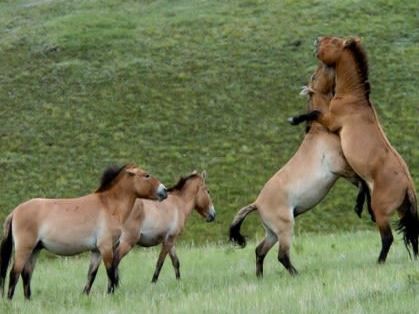
- Tour: Hustai National Park Exploration
- Accommodation: Hustai National Park Ger Camp
- Meals: B, L, D
Hustai National Park Exploration
After breakfast this morning, drive to Hustai National Park for a private presentation about the park with the Hustai Research Center. We will be joined by a special biologist during our exploration of the park. Here we embark on a search for the world’s last surviving subspecies of the wild horses (Eques Ferus), known as Przewalski’s horse or "takhi". Poaching and livestock overgrazing decimated what was once large herds of horses and, after sightings ceased in the 1960s, conservationists pronounced the takhi extinct in the wild. Fortunately, small numbers of these distinctive Mongolian horses were living in captivity, so scientists collaborated internationally to breed and reintroduce the species in its native habitat. The reintroduction of the rare and endangered Przewalski’s horse has proven a success story and current estimates place the total free-ranging takhi population in Khustai Nuruu and other reintroduction areas at nearly 400.
In the late afternoon we'll explore the remains of Neolithic graves (known as Ongot
monument). The Ongot stone monuments date back to the period when Mongolia was a part of the Turkish Empire (552-742 B.C). The Ongot is the biggest collection of stone monuments in Asia, with over 30 stones carved into man and animal shaped figures.
Day 3: Journey to Karakorum
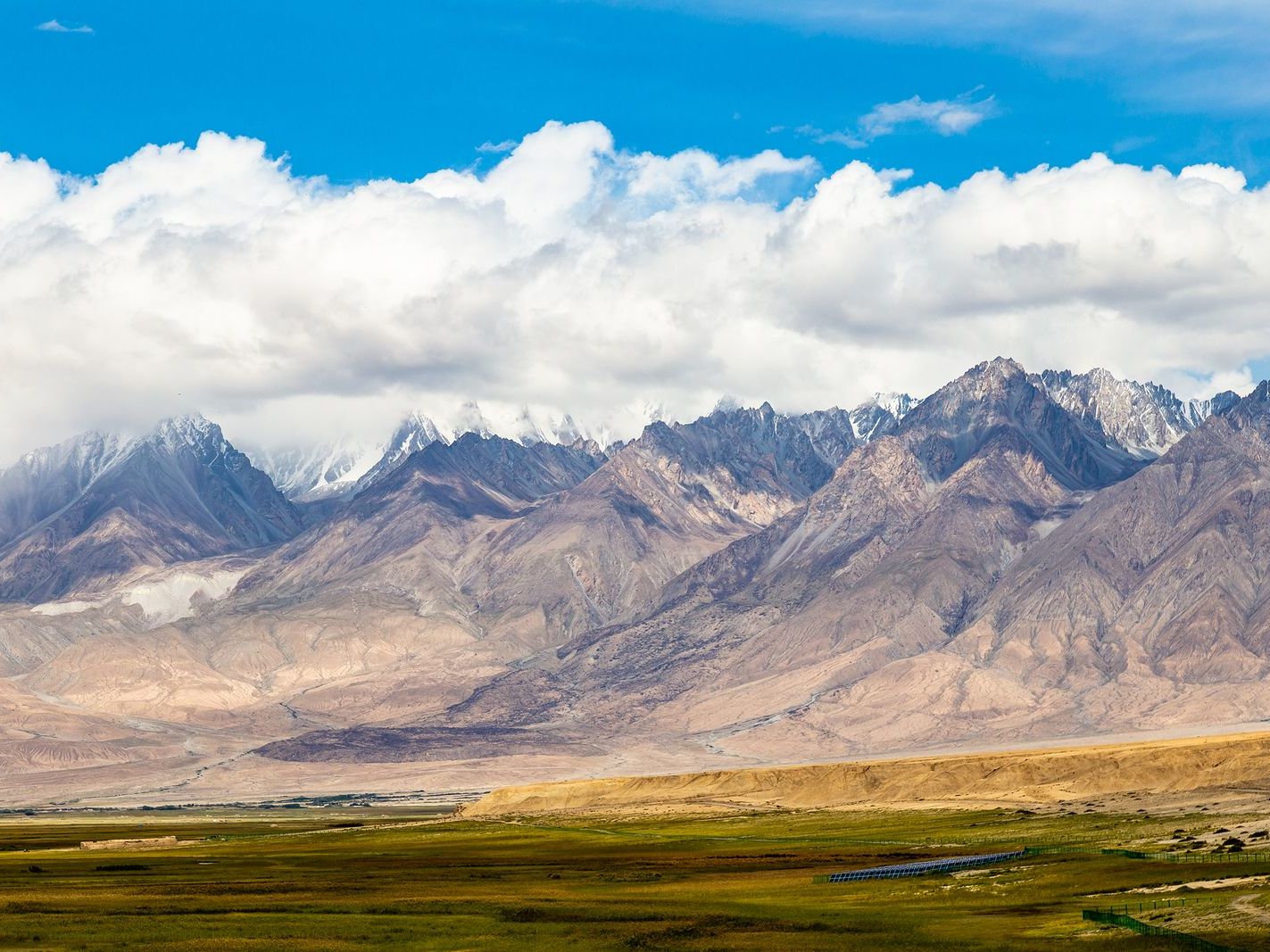
- Tour: Journey to Karakorum
- Accommodation: Local Mongolian Camp
- Meals: B, L, D
Journey to Karakorum
Today, you will travel overland to the ancient capital of Mongolia, Karakorum. For 30 years the ancient capital of the Mongoila Empire under Genghis Khan, the largest empire the world has ever seen. At it’s height in 1279 it covered nearly all of Asia and Europe (his grandson Kublai Khan moved the capital to Beijing). This area is part of a UNESCO World Heritage site. There is little left of the former capital these days, but the walls of the massive Erdenezuu Monastery, built in 1586, still stand. Other temples suffered damage under communist purges of the 20th century, as they attempted to eradicate the 60 temples that housed nearly 10,000 Buddhist monks.
This afternoon, we a visit to the Erdene Zuu Monastery which is the most ancient surviving Buddhist monastery in Mongolia. It is in Ovorkhangai Province, near the town of Kharkorin and adjacent to the ancient city of Karakorin. It is part of the World Heritage Site entitled Orkhon Valley Cultural Landscape. On the way we drive by Erdene Khamba Monastery, also known as Khogno Tarnyn Khiid, is located only 18 km north of Elsen Tasarhai, at the Khogno Khan Uul Mountains (1967 m ASL.) Today there are only the ruins. Erdene Khamba Monastery had two sections: the lower one called the Zaluu Khiid, or the "Novice Temple" and the upper one called the Uvgun Khiid, or the "Elder's Temple", which was built on top of the mountain. The monastery was built in a sacred valley, according to Mongolian Buddhist traditions.
Day 4: Journey to Ongi Monastery

- Tour: Ongi Monastery
- Accommodation: Local Mongolian Camp
- Meals: B, L, D
Ongi Monastery
Today, we drive south to the Ongi Monastery ruins. Ongi Monastery, also known as Ongiin Khiid, was once one of the largest monasteries in Mongolia, situated in the province of Dundgovi. It was founded in the 17th century and thrived as a center for Buddhist learning and practice for centuries. At its peak, it housed over a thousand monks and comprised multiple temples, stupas, and other structures.
The Ongi Monastery suffered significant destruction during the communist purges of the 1930s, when many monasteries across Mongolia were targeted. The monastery was mostly destroyed, and more than 200 monks were either killed or forced to renounce their vows. The site lay abandoned and in ruins for many decades.
After the fall of the Soviet Union, monastery students returned to once again practice Buddhism and work on restoration.
Day 5: Journey to Bayanzag

- Tour: Tour: Bayanzag
- Accommodation: Local Mongolian Camp
- Meals: B, L, D
Tour: Bayanzag
Today, we will drive to the UNESO Biosphere Reserve Bayanzag. Nicknamed the Flaming Cliffs, Bayanzag lays in the Gobi Desert of Mongolia. Bayanzag is a famous paleontological site and gained international recognition due to the significant discoveries of dinosaur fossils and eggs made there in the early 20th century. Drawing comparisons to the red-rock bluffs of the American Southwest, the area is characterized by its unique landscape of red sandstone cliffs and desert terrain, which take on a fiery hue during sunset (giving rise its nickname!) and yields fossils dating back millions of years.
The first major expedition to Bayanzag was led by American paleontologist Roy Chapman Andrews in the 1920s, which resulted in the discovery of numerous dinosaur remains, as well as the first confirmed dinosaur eggs. Today, Bayanzag remains an important site for paleontological research, attracting scientists and enthusiasts from around the world. Visitors to the area can explore the desert landscape, visit the Flaming Cliffs, and even participate in fossil-hunting expeditions guided by local experts. It's not only a haven for paleontology buffs but also offers a glimpse into the stark beauty of the Gobi Desert and the rich natural history of Mongolia.
Day 6: Khongor Sand Dune Exploration

- Tour: Tour: Khongor Sand Dune
- Accommodation: Local Mongolian Camp
- Meals: B, L, D
Tour: Khongor Sand Dune
Following in the steps of past nomads, this morning we drive four hours through the desert along the Altai (or "Golden") Mountain range to the Khongor Sand Dune, also known as the Singing Dunes or Khongoryn Els. As one of the largest and most spectacular sand dunes in Mongolia, these dunes stretch over 180 kilometers (112 mi) in length and rising to heights of up to 300 meters (984 ft), making Khongor Sand Dune a stunning natural wonder.
The dunes are formed by wind-blown sand accumulating over thousands of years, creating a vast sea of golden sand that seems to stretch endlessly across the desert landscape. One of the most fascinating features of Khongor Sand Dune is the phenomenon known as "singing" or "booming," where the shifting sands produce a low, humming sound when disturbed by the wind or by footsteps.
Cattle-herding nomads, along with Han Chinese farmers on the other side of the border, comprise the Gobi’s sparse population, with a density of less than three people per square mile. Though largely inhospitable to human settlement, the Great Gobi does support a remarkable variety of flora and fauna of more than 400 plant species, 150 bird species, and nearly 50 mammal species, some unique to this Central Asian habitat, including Gobi bears and Bactrian camels. To promote sustainable land use and conservation of the Gobi’s unique natural heritage, UNESCO in 1991 designated the Gobi Desert an international Biosphere Reserve, the largest such reserve in Asia and fourth largest in the world.
Today, we'll enjoy a camel ride across the dunes and enjoy a rewarding hike for panoramic views of the surrounding landscape as well as a visit with a local family.
Day 7: Eagle Valley Exploration
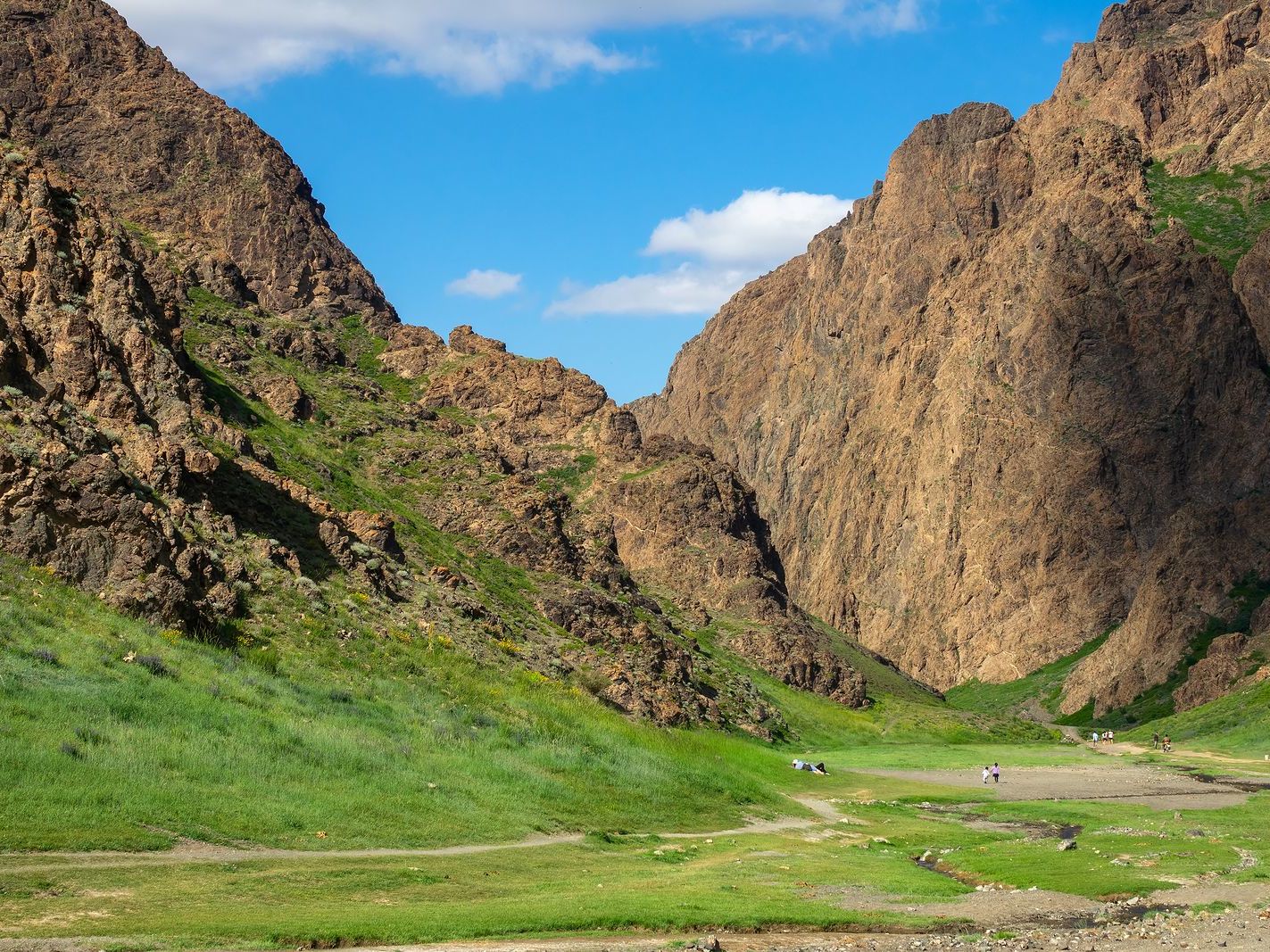
- Tour: Tour: Eagle Valley
- Accommodation: Local Mongolian Camp
- Meals: B, L, D
Tour: Eagle Valley
Eagle Valley, also known as Yolyn Am, is a striking natural canyon located in the Gurvan Saikhan Mountains of southern Mongolia, within the Gobi Gurvansaikhan National Park. The valley is renowned for its dramatic scenery, unique rock formations, and diverse wildlife.Completely shaded from the sun in some parts by high cliff walls, Eagle Valley is often covered in thick ice during the winter months and this ice persists well into the summer, providing a cool refuge amidst the desert heat and creating a stark contrast with the surrounding desert.
Eagle Valley is also home to a variety of plant and animal species that have adapted to the harsh desert environment. Visitors may encounter rare wildlife, including wild sheep grazing high on the cliff walls or the majestic golden eagle hunting for prey, which gives the valley its name. You can learn more about about the different wildlife here at the Natural History Museum, located near the entrance to the valley.
The best time spotting wildlife is at dawn or dusk – you may discuss with your guide which time of the day you prefer. Today, we will enjoy different hikes through Eagle Valley and enjoy the marvelous views if this rugged, unique landscape.
Day 8: White Stupa & Gobi Museum
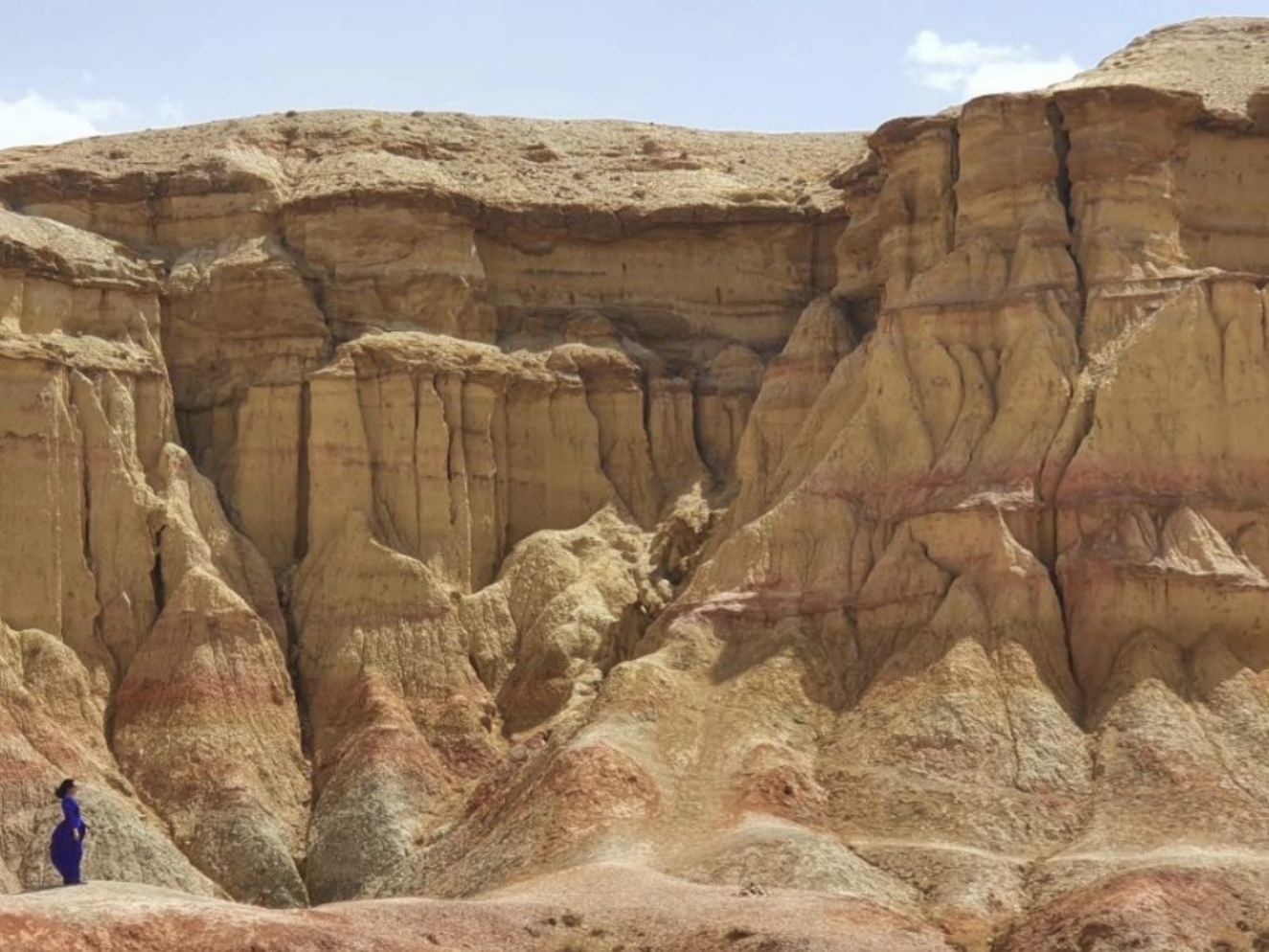
- Tour: Tour: The National Museum of Mongolia and White Stupa
- Accommodation: Local Mongolian Camp
- Meals: B, L, D
Tour: The National Museum of Mongolia and White Stupa
After breakfast this morning, drive to Dalanzadgad to visit the Gobi Museum of Nature and History. The museum lies in the heart of the Gobi Desert and serves as a gateway to the natural wonders and rich history unique to this region. Exhibits include a wide range of topics, from geology to paleontology, archaeology and ethnography as well as ecology. On display you'll find fossils, dinosaur remains, minerals and artifacts dating back thousands of years, offering a glimpse not only into the geological past of this area but also into the lives of its inhabitants throughout history. After your morning at the museum, drive to Tsagaan Suvarga, also known as White Stupa, a unique geological fromation named for thw towering cliffs of white and red sedimentary rock that resemble a Buddhist shrine. Locals have long venerated this mountain, and have such a combination of fear and respect for it that they refrain from saying its real name. They call it “Tsagaan Khairkhan”, which means “White darling.”
Day 9: Baga Gazriin Chuluu

- Tour: Baga Gazriin Chuluu
- Accommodation: Local Mongolian Camp
- Meals: B, L, D
Baga Gazriin Chuluu
Baga Gazriin Chuluu, which translates to "Small Rock Formation," is an area of granite rock formations that rise dramatically from the flat desert landscape, creating a stunning and otherworldly sight. These granite outcrops, some reaching heights of up to 15-30 meters (49-98 feet), are scattered across the desert terrain, forming a labyrinth of narrow canyons, hidden caves, and rugged cliffs. Legend says that, in the 19th Century, two revered monks inhabited the area and their rock carvings can still be found. That being said, over the centuries, Baga Gazriin Chuluu has been a place of worship and pilgrimage for nomadic herders and Buddhist monks, who have left behind numerous drawings, shrines, and ovoos (sacred cairns) as offerings to the spirits believed to sacredly reside here. With hidden caves to explore and panoramic viewpoints to admire, Baga Gazriin Chuluu is perfect for adventurers.
Day 10: Tuul Riverside

- Tour: Maikhan Tolgoi Gachuurt & Genghiis Khan
- Accommodation: Tuul Riverside Lodge
- Meals: B, L, D
Maikhan Tolgoi Gachuurt & Genghiis Khan
After breakfast, we'll make our way to Maikhan Tolgoi Gachuurt with a stop at the Genghiis Khan Equestrian Statue on the way. Scenically situated by the Tuul River, this is the spot where, as legend has it, Genghiis Khan found a golden whip, (traditionally considered an auspicious omen) that consequently inspired him to conquer half of the known world in the 13th century. Designed and built by Mongolian architects in 2008 and wrapped in 250 tons of gleaming stainless steel, the enormous horse and its gigantic rider faces south, standing at 40 meters (131 feet) tall. The statue was placed on top of the visitor’s center, already a remarkable 10 meters high from its base. There are 36 columns representing the 36 Khans from Genghis to Ligdan Khan. Here you can also enjoy a great panoramic view from the head of the horse. The very well-planned complex is surrounded by 200 gers arranged in the pattern of the same horse seal used by 13th century Mongol tribes.
After this fascinating visit, we'll continue on to Tuul Riverside Lodge. Weather permitting, you will be transferred by airboat to your lodging. Your gers are prepared by a dedicated team of people, waiting to give you a warm welcome!
Day 11: Tuul Riverside

- Tour: Day at Tuul Riverside Lodge
- Accommodation: Tuul Riverside Lodge
- Meals: B, L, D
Day at Tuul Riverside Lodge
Channel your inner explorer and discover the beautiful surroundings of our your camp today! We hope to give you an insight of Mongolia’s captivating culture through various activities. Start with a mini cooking lesson in the morning. Mongolian traditional cooking has been enriched with cooking traditions of many other nations dating back 800 years ago to the time of conquest which led to rapid cultural exchange. Today, we will make "buuz", which is cooked on special occasions and is especially fun for kids to prepare!
After lunch our nomadic neighbor will come with his ox and his cart will take you on a ride. On the way stop and visit the local herder family to learn more about their lifestyle. The day will end with a camp bon-fire and star gazing ... and absolutely unforgettable sight on a clear night.
Day 12: Ulaanbaatar Departure

- Transportation: Airport Transfers
- Meals: B
After a relaxed breakfast, you will be transferred to the airport for your departure flight. We hope you had an amazing time discovering the beauty of Mongolia's culture and landscapes and wish you a safe journey home!
Accommodation

Bayangol Hotel
Since 1964, the Bayangol Hotel has been continuously serving travelers. Ideally situated in Sukhbaatar; one of the city's most popular locales, the hotel provides access to the city's biggest attractions. Services include 24-hour room service, free WiFi in all rooms, fireplace, and more.
Hustai National Park Ger Camp
National Park ger camp.
Local Mongolian Camp
Local ger camp with en-suite bathroom.
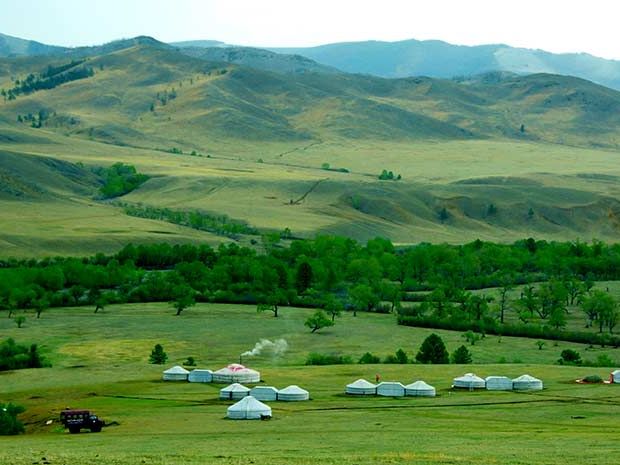
Tuul Riverside Lodge
The Tuul Riverside Lodge is a small, fully sustainable, traditional Mongolian camp surrounded by a sea of grass and rolling hills, which stretch down to the nearby River Tuul and beyond. Situated within an hour’s drive east of Mongolia’s bustling capital Ulaanbaatar, a warm, and peaceful welcome awaits you. You will stay in beautifully decorated traditional dwellings, known locally as gers, with the added advantage of en suite facilities. Gers are constructed from a wooden lattice frame, 88 roof poles, and are covered with layers of felt to insulate against the harsh Mongolian climate. Both strong and reliable, they are perfect places to spend your time in Mongolia.
At the Tuul Riverside Lodge there is something for everyone, regardless of age, experience or ability. We offer a wide range of both adventure and cultural activities, allowing you to enjoy and learn about Mongolia to the fullest. Relax around a roaring campfire and marvel as the Milky Way passes overhead. Enjoy the solitude and freedom that is Mongolia, and let your worries fade away.
Pricing and Details
Starting from $ 5,285 per person
*Pricing is based on two persons traveling together, based on availability, subject to change.
Price Includes
- Full support before, during & after your trip
- Meals as mentioned
- Accommodation as mentioned
- Tours/activities as mentioned
- Transport as mentioned
Price Excludes
- International & domestic flights
- Travel insurance (highly recommended)
- Entrance visas when applicable
- Other services not mentioned
- Tips and gratuities to guides, drivers
- Taxes and fees
Why Global Basecamps
Request Free Quote
Our entire team is dedicated to making this custom journey come true. Request a free quote by filling out the form and please share any details to help us customize this perfect trip just for you.
Can’t wait another minute? We understand, call us directly at (866) 577-2462 and speak with one of our extraordinary travel specialists.










